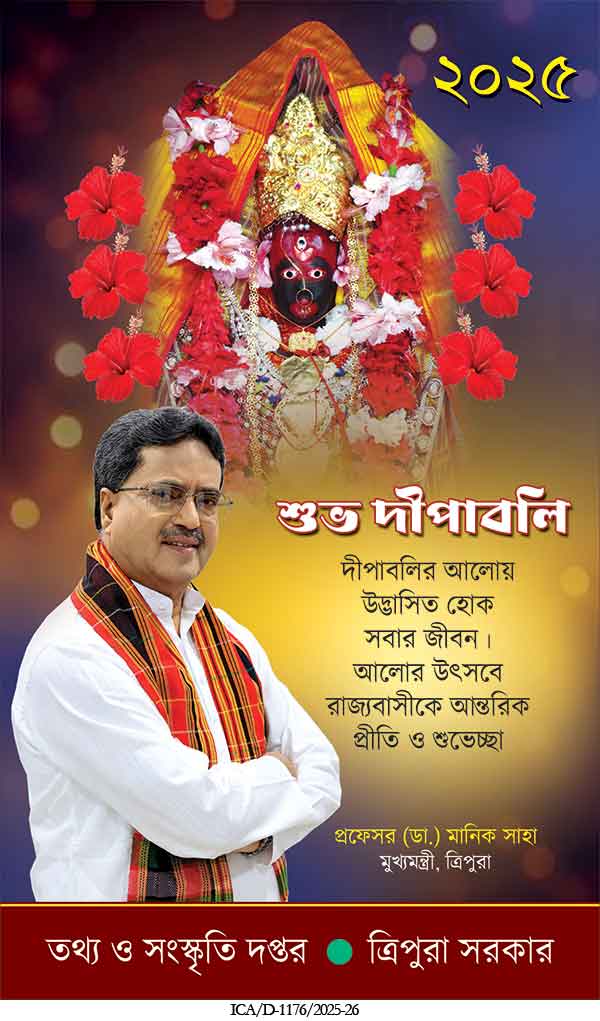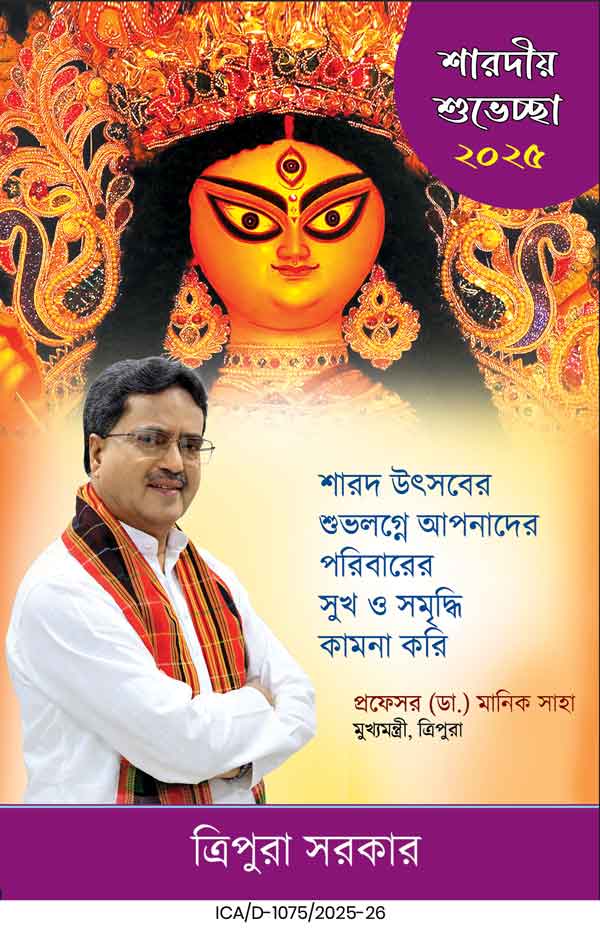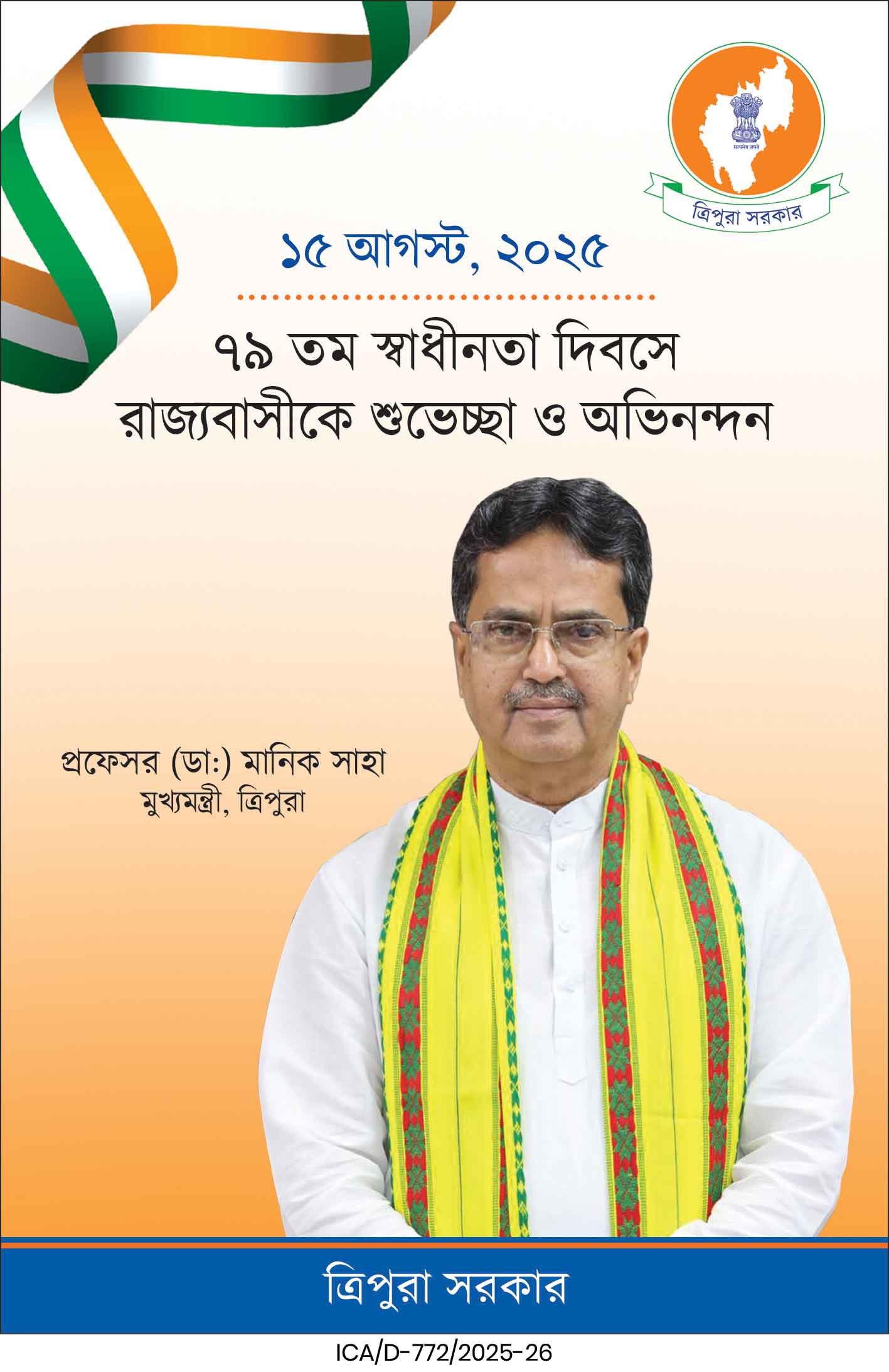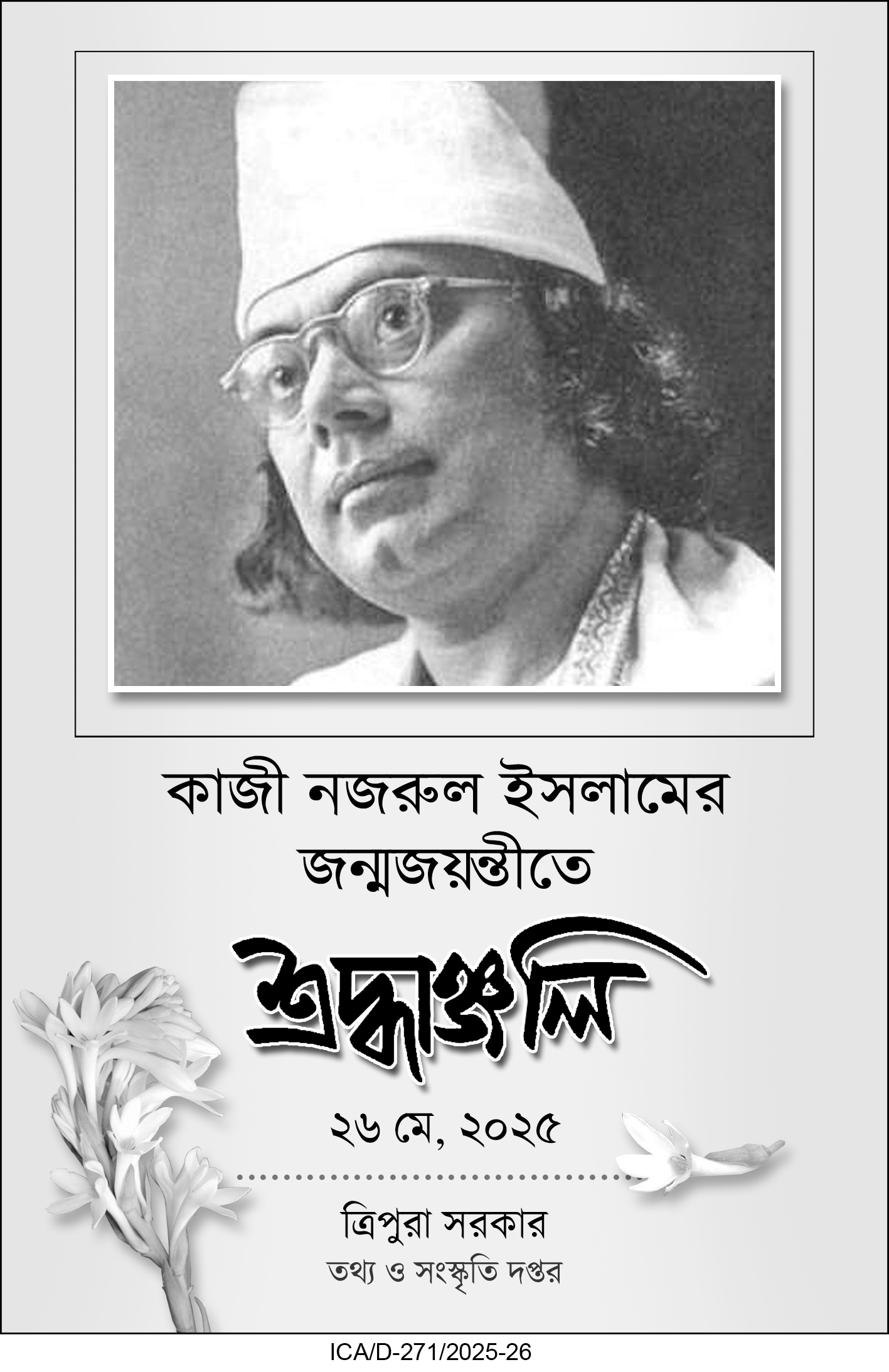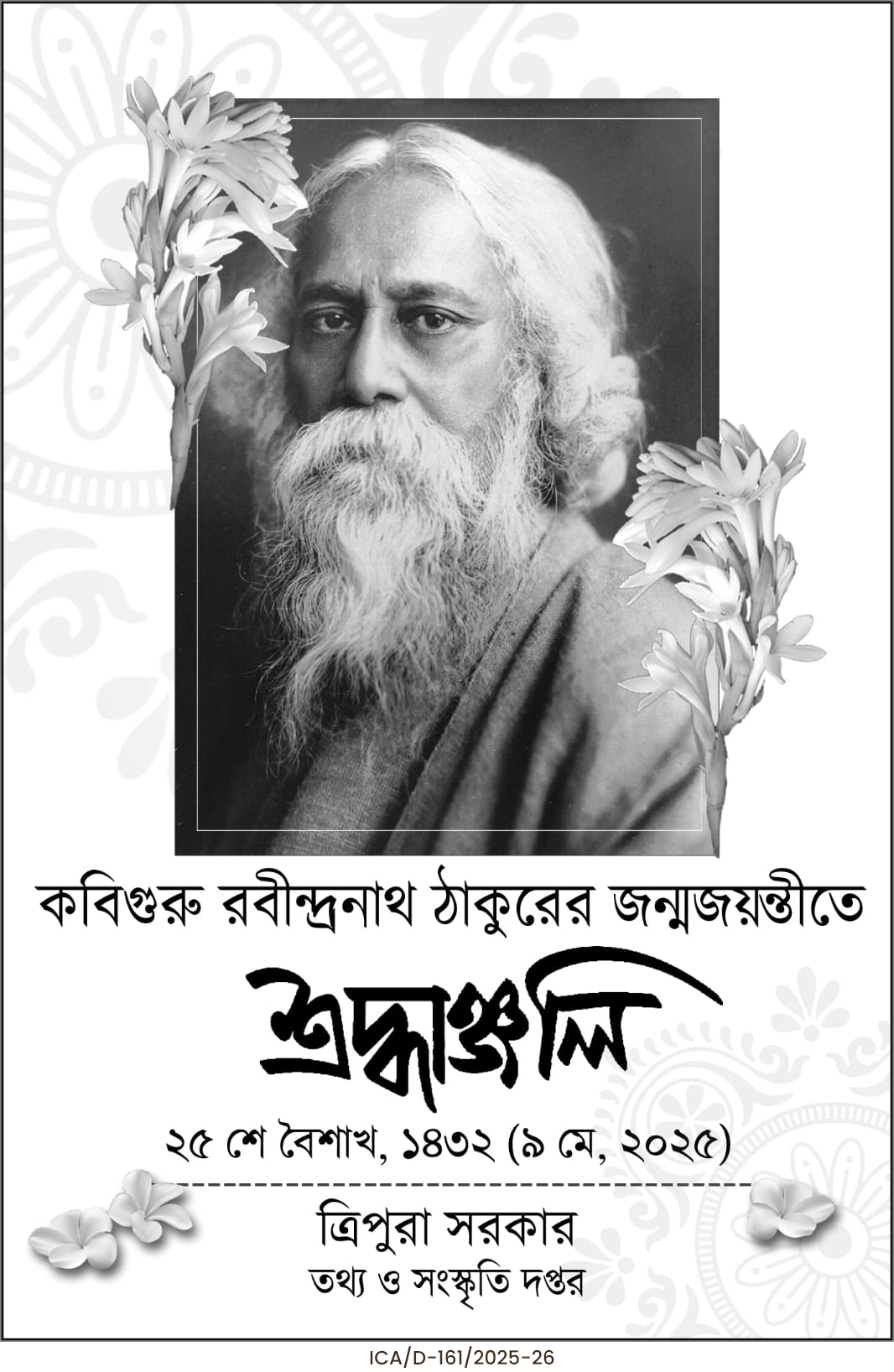 Pic representative. From internet
Pic representative. From internet
Looking back : 14 August 2003
The August nights always seemed dark and deep at Kamalnagar, a sparsely inhabited Bengali settlement under the shadow of bushy mango and jackfruit trees at a sharp bend on the Agartala–Khowai road in West Tripura. And, at 9.30 pm the inhabitants, mostly impoverished farmers, were retiring at home. After a full day of hard work in the field they were too tired to notice that some shadowy figures dressed in camouflage fatigues and heavily armed with Kalashnikovs and axes were moving stealthily towards their hamlet. It was a murderous band of All Tripura Tiger Force insurgents and they were closing in for the kill. Their order from their chief Ranjit Debbarma ( now TIPRA Motha MLA) was clear – Kill as many as possible, ensure that the whole hamlets were cleared of Bengalis. And they were hell bent to carry out the order. Their commander Chitta Debbarma was a perfect choice for such bloodsheds and brutality. Ranjit Debbarma chosen the leader right.
Six-year-old Prasenjit, elder son of Dhirendra Debnath also had gone to bed early—he would have to attend the Independence Day celebration next morning. Little did he know that within half an hour he would be woken up soaked with his brother’s blood.
‘I woke up as they were trying to break into our bedroom. As soon as my father threw my younger brother, Shyamal, and me under the bed, they stormed in and started shooting at my parents.’
‘I hid behind a rice bag and could see some of them kneel down, pointing their guns beneath the bed. When they saw my three-year-old brother Shyamal they squeezed the triggers from three feet away and he was riddled with bullets. Shyamal died on the spot and his blood splashed all over my body. Somehow they did not notice me and I survived,’ the six year old told the visiting reporters. His parents were seriously injured in the attack.
Prasenjit was lucky but not the others.
Four hours later the survivors narrated how it all happened to the reporters. The killer squad first cordoned off the entire village and then set afire the huts. As, people—taken aback, confusion thickening on their still sleepy eyes—rushed out, they were slaughtered one after another. The militants were firing indiscriminately from their automatics at anybody who fell in front of them or were simply chased down. As some of the militants forced their way into the huts with their blazing guns, many tried to slip under the bed—the only hiding place they could think of at that moment. But the militants knelt down and pressed the trigger to kill with clinical efficiency. Some were also axed to death. All the time the insurgents were shouting obscenities at the hapless victims.
It was a hell out there. Dying people were screaming with excruciating pain, gunshots from the blazing Kalashnikovs were shattering the night cool, the mud walled, thatched dwellings were being reduced to ashes as high flames engulfed the huts one after another and the cattle, unable to escape from their sheds, were being burnt alive, their pathetic baying filling the air. It was a gruesome and live panoramic show of the 1984 movie on Cambodia, The Killing Fields.
It was not all. Almost at the same time a similar mayhem was being committed by another ATTF group at Baralunga, a somewhat somnolent village nestled at the foothills of Baramura hill range –about four kilometers east of Kamalnagar.
After the two simultaneous attacks on that bloodiest night, the final body count stood at 30. While 27 were gunned down or simply hacked to death and were lying scattered in all possible places—from paddy field to behind the cowshed or beneath the cots, three died on way to hospital. A total 11 children—aged between 10 to three months—were butchered. The list also includes 70 year old men and 11 women. The militants wiped out three entire families—one at Kamalnagar and two at Baralunga. In Kamalnagar alone the militants mowed down 14 villagers including seven members of Narendra Sarkar’s family.
Some of Totabari people and some of the few lucky ones at Kamalnagar might have escaped the imminent death as the then SP TB Roy arrived on the spot on way to Agartala from Khowai, but Baralunga villagers were not so fortunate. The village is situated in the deep interior and is covered by hillocks with no proper road connectivity. Here the ATTF insurgents carried out their mayhem with impunity. The modus operandi was similar to that of Kamalnagar.
‘There was total confusion as the militants attacked two hamlets in quick succession. We could hear the gunshots from Baralunga but could not locate the place,’ said an official of Teliamura police station. When it was clear that Baralunga, located somewhere about 8 kms north east of Teliamura police station, had been attacked, security forces rushed to the spot and found 16 persons lying in pool of blood.
By the time the police and security forces launched ‘massive combing operations’ to hunt down the insurgents in the hilly interiors and press corps swarmed down the villages, 30 innocent civilians—most of whom were children—were lying dead and the entire country was preparing to celebrate the 56th Independence Day.
Some Days later……
‘…All is not lost; the unconquerable will…
And courage never to submit or yield,
And, what is else, not to be overcome…’
(Paradise Lost)
It is here that death is defied with absolute arrogance. On October 2, 2003 forty-eight days after the Kamalnagar and Baralunga massacres the thick bloodstains that blackened the earth had faded, while pain and agony of the families subsided.
Just about 200 meters from the blood soaked settlement of Kamalnagar; a Durga Puja celebration, organized by Binapani Club, was in full swing with traditional éclat and fervour. On ‘Saptami day’ mikes were blaring popular albums and housewives gathered with offerings to ‘Mother Durga.’ Rupa, Sonali and Dipak—all aged between 8 and 12—were in festive mood again. On the fateful night, when the marauders had stormed into their hut, they had lost their mother Bani Debnath. Eight year old Prasenjit, the boy who had once narrated the harrowing tale as to how he had seen the insurgents killing people, was found moving around with a toy pistol in hand.
‘There are as many as three Durga Pujas—one right at Kamalnagar and two others only within one kilometer—Totabari and Moharcherra. On May 7 militants had killed nine persons at Moharcherra too’
‘One more puja is also being held at Krishnapur, within less than half kilometer of Baralunga where on the same night 16 persons had been shot dead by militants,’ said Parimal Paul, a local resident.
For Kartik Datta, a resident of Khowai, it is the lust for life that enables the people to forget the deaths of their near and dear ones and go along with what comes next.
‘You see, we have lived with the gun toting militants around for years. We have seen so many massacres, so many dead bodies at Bazaar Colony, Gauranga tilla, Indira Colony, Bagber, Moharcherra. Perhaps, somehow we have also learnt to live with militants and corpses,’ he observes.
At first it may appear as a stoic acceptance of the inevitable like ‘flies to the hand of wanton boys.’ But the bottom line comes from Ashit Ghosh, a local journalist:
‘Durga Puja this year symbolizes triumph of life over death to the people of Tripura, particularly to the people of Khowai sub-division where several hundred killings took place during the last few years. A span of forty eight days is a long time, especially when shadow of militants’ gun hangs always on our head like the proverbial sword of damocles and no body knows for sure when they will come killing. You can neither escape from reality nor from life.’
There is, of course, a silent old man who does not accept this philosophical note: Haradhan Sarkar. The septuagenarian has seen life —its ups and down—but the last thing he had to witness from a hiding spot was militants killing his two sons, daughter-in-law and five grand children. To him, Mother Durga brings no brighter day ahead.
Tripura over the last three decades, or more precisely from 1980 to 2001, was caught in the vortex of ethnic conflict and tribal militancy which was essentially characterized by brutal civilian massacres, abduction of innocent citizens, ambushes on security forces, large scale extortions and also inter-gang encounters, that took a heavy toll of human lives and properties in this tiny state. There is no specific data as to how many people were slaughtered, maimed for life, kidnapped and tortured to death despite payment of ransom money, or how many people actually were displaced due to mindless violence for the second time in 50 years. The death figure could touch anything between 5000 and 6000 while displacement, by official estimate only, stands at about 1.5 lakhs. Several thousand people—mostly students, teachers, petty traders, rickshaw pullers, vegetable vendors, blacksmiths, wood cutters, tea workers and executives—were kidnapped and many of them were brutally butchered in captivity despite their family forking out huge amount of money.
According to official data from 1992 when the second phase of full-scale militancy erupted in Tripura till September 2, 2008 as many as 3458 persons were killed. Among them 2497 were unarmed civilians, 449 were security force personnel and police personnel and 512 were militants. Highest casualty was in 2000 when a total of 514 persons were killed and among them 453 were innocent civilians.
This data, however, does not include those who were killed in militant captivity after abduction and are still reported ‘missing.’ Nor does it include many incidents in the deep interiors of the hilly region where the militants killed tribals and police were not informed.
Moreover, if the killings during the TNV militancy in the eighties were added the figure would go well beyond 5000.
( From “The Eyewitness: Tales from Tripura’s Ethnic Conflict” by Manas Pal)

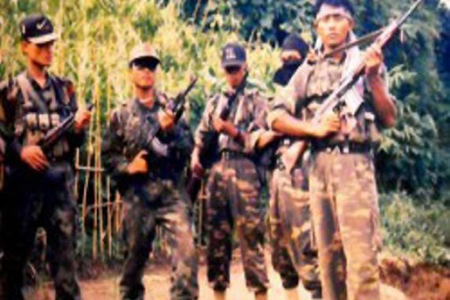 Pic representative. From internet
Pic representative. From internet